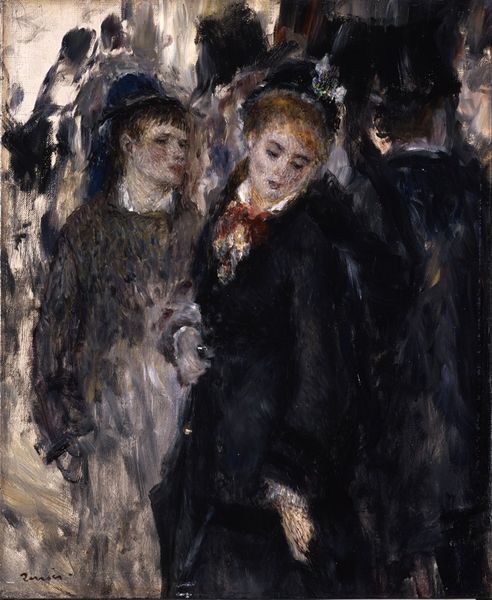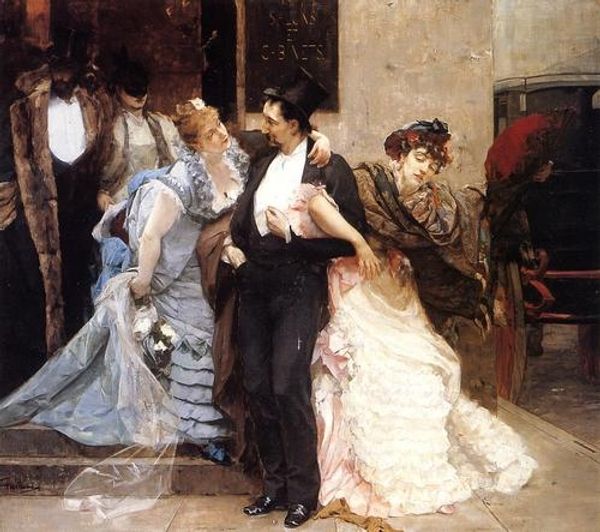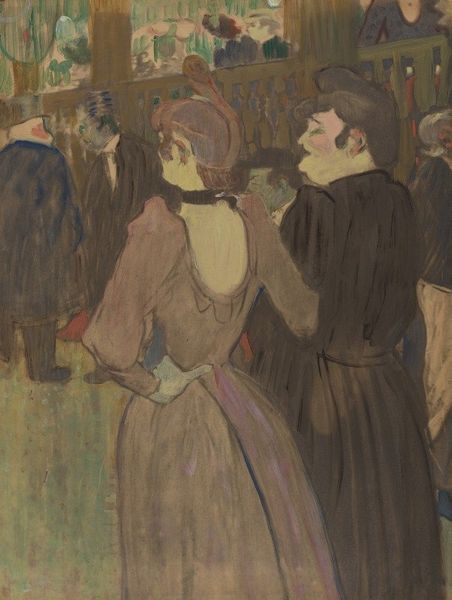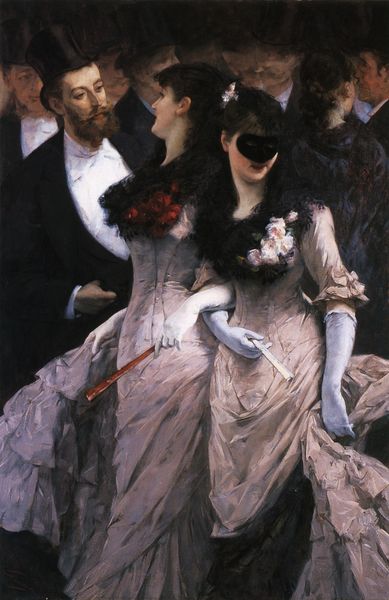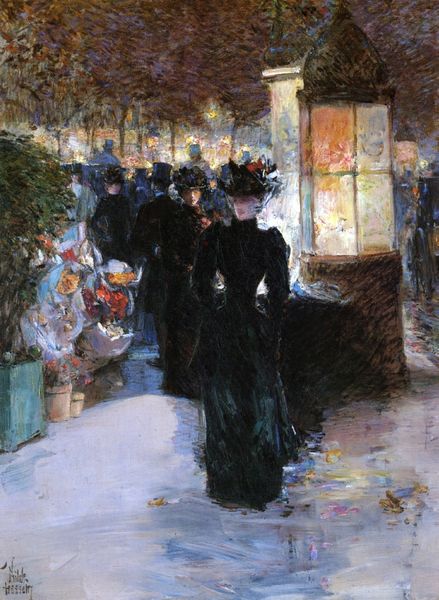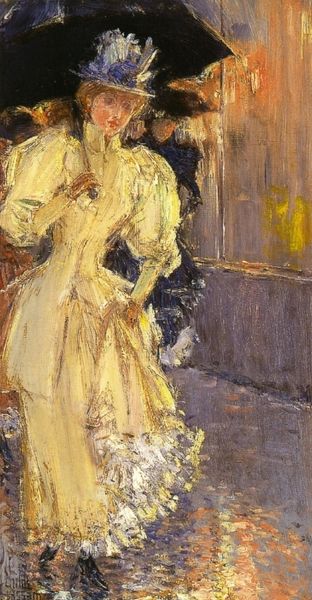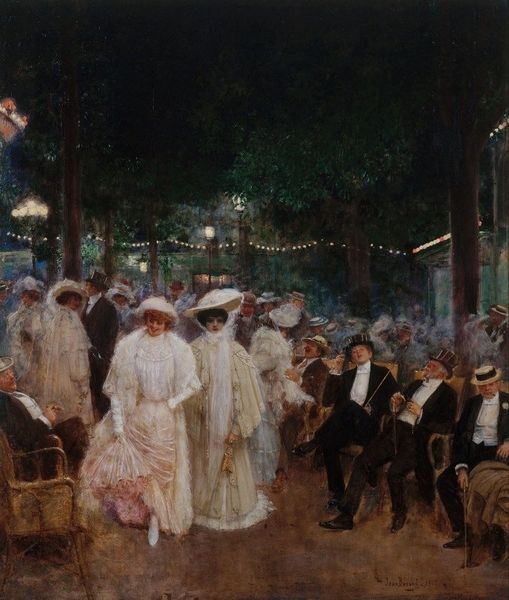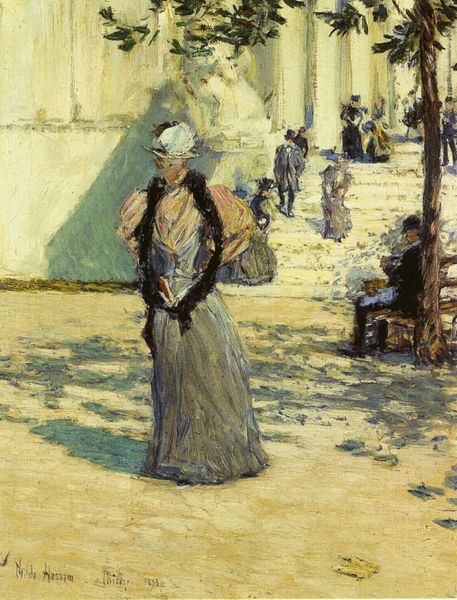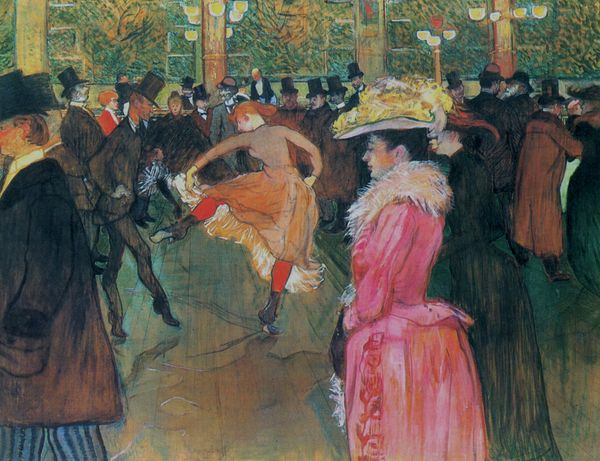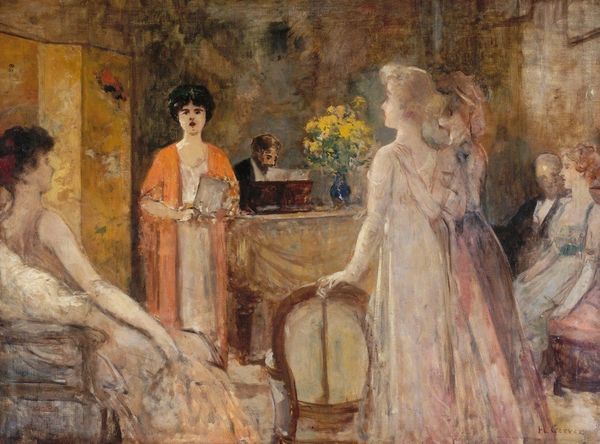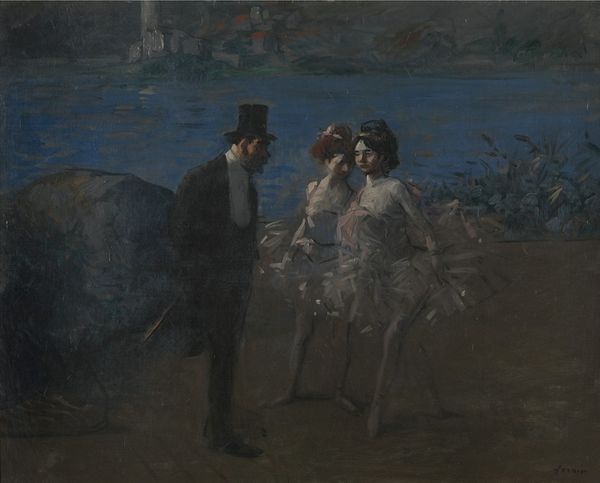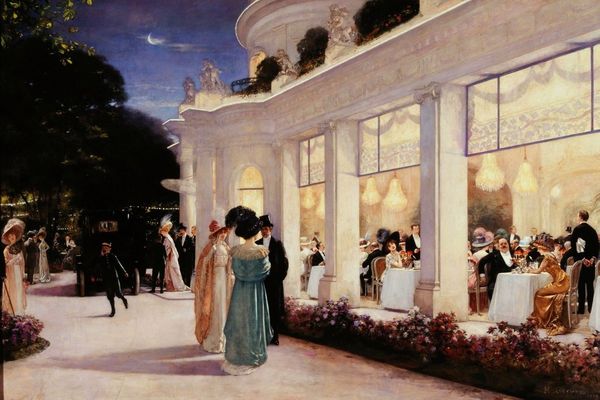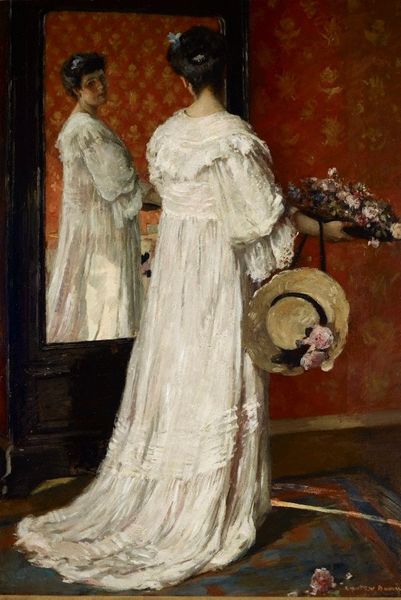
Copyright: Public domain
Editor: This is "A New Year's Nocturne, New York" painted by Childe Hassam in 1892. It seems to be watercolor on paper, and there is this lovely muted color palette and soft focus, which gives the scene a very romantic, almost dreamlike quality. What do you see in this piece? Curator: I see a carefully constructed narrative steeped in the visual language of its time. The figures, though rendered with the fleeting touch of Impressionism, are deliberately posed to convey specific societal roles. The woman gazes at the flower shop – flowers, often a symbol of ephemeral beauty and feminine virtue. Does she desire those flowers, that fleeting beauty? And what does the man, in his formal attire, represent in this transaction? Editor: Perhaps a provider, offering beauty to his companion? Curator: Indeed, but the visual arrangement adds layers. The top hat, a potent symbol of urban respectability in the late 19th century, overshadows him, doesn’t it? The hat speaks volumes about aspirations, class consciousness and conformity. It also creates anonymity and hints at social performance. Does this impact your read of this flaneur and his lady? Editor: That's interesting. I hadn't considered the anonymity. It gives the scene a more universal quality, like they could be any couple in New York at that time. So many levels to decode. Curator: Absolutely. The lights blurred in the background could represent modern advances in street illumination that shaped how society experienced nighttime in that era. What appears to be a simple street scene actually invites us to consider larger themes of desire, gender roles, and the performance of social identity within a rapidly modernizing world. Editor: It's fascinating how much cultural weight can be loaded into an image like this. Thank you for showing me the language within it!
Comments
No comments
Be the first to comment and join the conversation on the ultimate creative platform.
